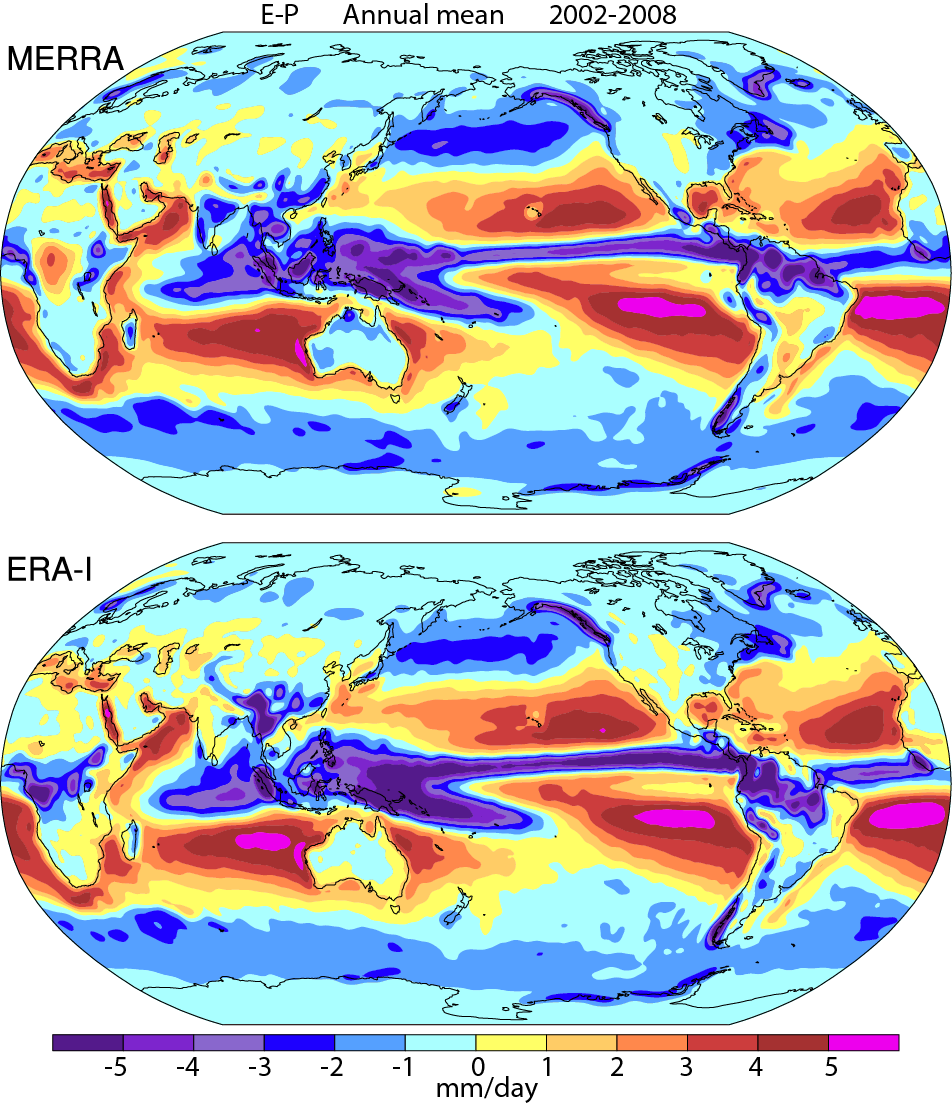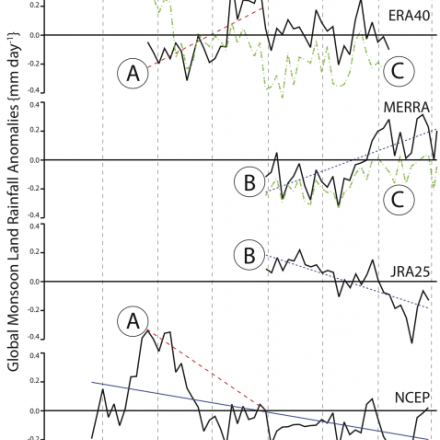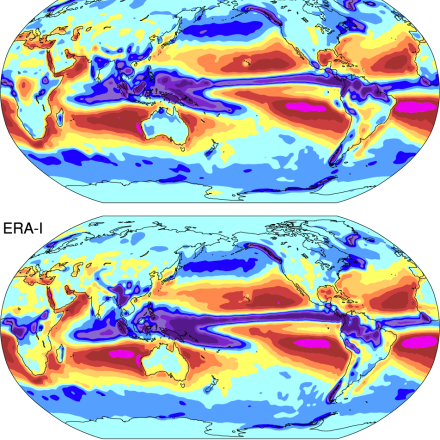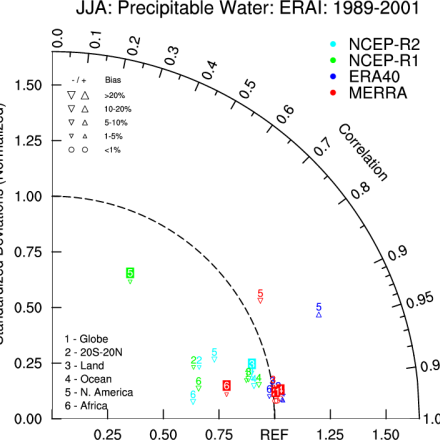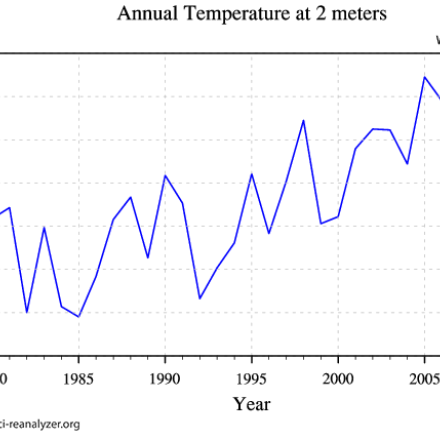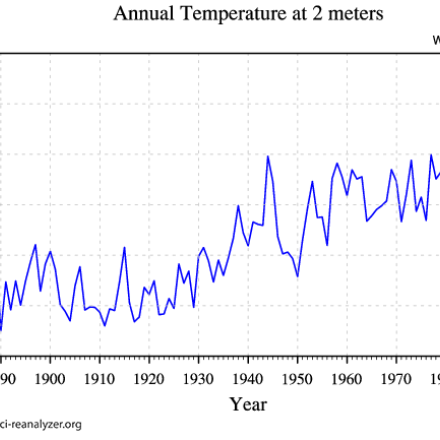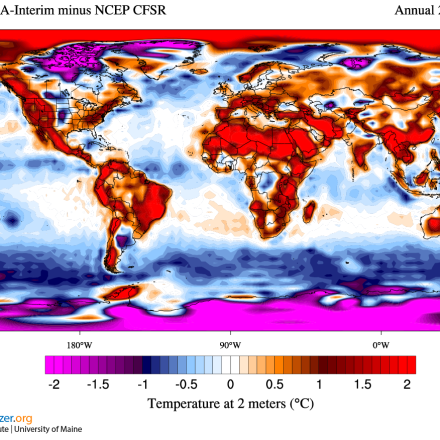Summary of atmospheric reanalysis products
| Name | Source | Domain | Years of record | Timestep | Spatial Resolution | Formats | Model Resolution | Scheme & Model Vintage |
|---|---|---|---|---|---|---|---|---|
| Arctic System Reanalysis (ASR) | Byrd Polar Research Center, The Ohio State University/ David Bromwich , NCAR , CIRES , U Illinois | Arctic | to | Sub-daily, Monthly | ASR v1; 30 km; 71 levels; 10hPA top , ASR v2; 15 km; 71 levels; 10hPA top | netCDF | 30 km and 15 km |
WRF-VAR |
| CERA-20C: ECMWF's Coupled Ocean-Atmosphere Reanalysis of the 20th Century | ECMWF | Global | to | Sub-daily, Daily, Monthly | ~ 125km; 160 x 320; 91 model levels/ 37 pressure levels / 16 potential temperature levels, and the 2 PVU potential vorticity level | netCDF, GRIB | 4DVAR 2016 |
|
| Climate Forecast System Reanalysis (CFSR) | NCEP | Global | to | Sub-daily, Monthly | .5°x.5° & 2.5°x2.5°, 0.266 hPA top | GRIB | T382 x 64 levels |
3DVAR 2009 |
| Equivalent Temperature: HadISDH.land and ERA5 | Global | to | Monthly | |||||
| ERA-20C: ECMWF's atmospheric reanalysis of the 20th century (and comparisons with NOAA's 20CR) | ECMWF | Global | to | Sub-daily, Daily, Monthly | ~ 125km; 160 x 320; 91 model levels/ 37 pressure levels / 16 potential temperature levels, and the 2 PVU potential vorticity level | netCDF, GRIB | 4DVAR 2012 |
|
| ERA-Interim | ECMWF | Global | to | Sub-daily, Daily, Monthly | 0.75°x0.75°x60 lev 0.1 hPA top | GRIB, netCDF | T255, 60 levels |
4DVAR 2006 |
| ERA5 atmospheric reanalysis | ECMWF | Global | to | Sub-daily, Daily, Monthly | ~31 km, 137 levels to 1 Pa | GRIB, netCDF | 4DVAR 2016; IFS release 41r2 |
|
| JRA-55 | Japanese Meteorological Agency | Global | to | Sub-daily, Monthly | T319 x 60 levels, 0.1 hPA top | GRIB | T319 x 60 levels |
4DVAR 2009 |
| NASA MERRA | NASA | Global | to | Sub-daily, Monthly | 0.5° x 0.667° x 72 , 0.01 hPA top | HDF, netCDF | 0.5° x 0.667° x 72 |
GEOS IAU 2009 |
| NASA's MERRA2 reanalysis | NASA Global Modeling and Assimilation Office | Global | to | Sub-daily, Daily, Monthly | ½° latitude by ⅝° longitude by 72 model levels (also interpolated to 42 pressure levels) | netCDF | Cubed sphere grid, stored at ½° latitude by ⅝° longitude by 72 model levels (also interpolated to 42 pressure levels) |
3DVAR 2014 |
| NCEP NARR | NCEP | North America | to | Climatology, Sub-daily, Monthly | 32km | GRIB | 32km x 45 eta |
3DVAR 2003 |
| NCEP-NCAR (R1): An Overview | NCEP , NCAR | Global | to | Sub-daily, Daily, Monthly | 2.5°x2.5°; 3 hPA top | GRIB, netCDF | T62 - 28 levels |
3DVAR 1995 |
| NOAA 20th-Century Reanalysis, Version 2 and 2c | NOAA ESRL , CIRES CDC / Gil Compo | Global | to | Sub-daily, Daily, Monthly | 2°x2°, 28 levels 10 hPA top | netCDF, GRIB | T62 28 levels |
Ensemble Kalman Filter 2009 |
